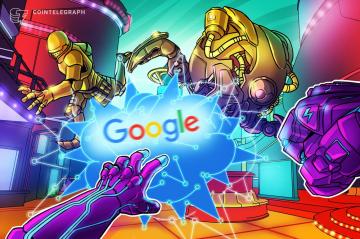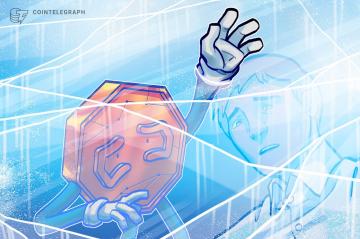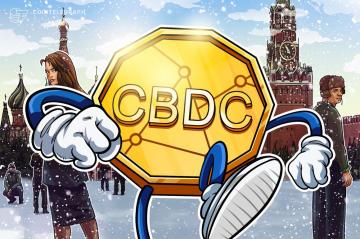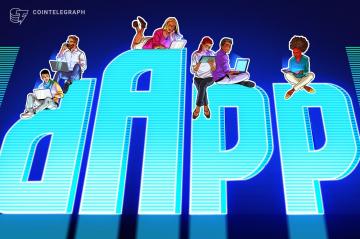Attracting and retaining customers have long been one of the major headaches for businesses all over the world. Companies use several ways to get these customers, and one such way is loyalty programs. These programs have been quite effective in retaining customers. But loyalty programs are not perfect. They have challenges, such as geographical limitations, limited reward options, complex redemptions, etc.
All these issues affect the overall effectiveness of loyalty programs. But Web3 and blockchain technologies like cryptocurrencies and non-fungible tokens (NFTs) can solve these challenges and redefine loyalty programs. Let’s discuss how.
What are loyalty points
Loyalty points are incentive programs businesses use to encourage customers to spend on their products. Users get more points based on how much they spend, which can be exchanged for more products or better quality services with the company. Loyalty programs are quite common, with everyone from airline companies and hotels to Starbucks offering one form or the other. Even credit card issuers now offer loyalty points.
How Web3 technologies can make loyalty programs better
Advocates of Web3 technologies are usually quick to point out its revolutionary capabilities for almost every industry. While skeptics can question this in other areas, blockchain technology has clear applications for loyalty programs. These include:
Management of multiple loyalty programs
One of the reasons for the inefficiency of loyalty programs is the low redemption rates on the part of customers. This is not essentially the customer’s fault. One brand can have several loyalty programs, making management difficult for customers and users. Then, loyalty programs are complex, forcing customers to do a lot of mental mathematics before redeeming their points. With blockchain technology, it could be possible for customers to redeem points in real time and even combine multiple loyalty programs into one.
Attract a younger audience
While the existing loyalty programs might work for the older generation, millennials and younger generations are increasingly becoming the major customer base for businesses. Novel developments such as Web3 technologies will appeal more to these age groups. For example, Gen-Z has an interest and buying experience in NFTs, followed by millennials. Thus, offering loyalty programs based on these technologies would likely attract and retain this user base.
Expand reward options
Most loyalty programs offer points that users can only redeem and use on products or services of the company. While this encourages customers to keep patronizing the business, it can limit user experience. Incorporating blockchain technology could change this, providing multiple reward options for rewards. For example, points could be converted into cryptocurrencies, and there could be digital collectibles as rewards.
Join the community where you can transform the future. Cointelegraph Innovation Circle brings blockchain technology leaders together to connect, collaborate and publish. Apply today
Experiential loyalty
Integrating Web3 technology for loyalty programs could also lead to innovations, such as experiential loyalty. This can improve customer engagement with the brand by rewarding them as a customer and making them a member of the brand community. Experiential loyalty is an immersive form of a loyalty program that’s possible with blockchain where users don’t just get points but also get digital collectibles. It gamifies the experience. This is already playing out with several move-to-earn platforms, and while it might take years, it will rebrand the entire loyalty program.
However, any impact Web3 technologies will have on loyalty programs will depend on the implementation. Beyond the marketing and hype, there needs to be a deliberate approach. Such an approach should adopt the following recommendations to be effective:
Start as a complimentary loyalty program rather than a substitute
One mistake many companies are making is forcing blockchain-based loyalty programs outright on their customers. While blockchain tech has seen a lot of adoption in the last few years, it is still not yet completely mainstream. For it to work, it is best when it is an additive loyalty program to the existing one, giving users the option to volunteer adoption and allowing businesses to slowly integrate Web3 into their business since there is no immediate pressure on the program to succeed.
Prioritize user experience
A major issue with any implementation of blockchain technologies is the user experience. Most user interfaces fail to bridge the gap between blockchain technology and the old-fashioned internet. This has limited the adoption of blockchain technology and could also affect any loyalty program that chooses to use it. But it is possible to design a great user interface that does away with the technicalities of blockchain technology such that users won’t even know they are interacting with the technology. This is what I call “Web 2.5,” where users are participating in Web3 but have a Web2 interface. Gradually, they are educated and introduced to more advanced Web3 concepts and applications.
Manage trading and speculation
Any business that includes NFTs as part of its loyalty program will likely include the ability to trade such NFTs. However, trading NFTs can easily attract speculators, which can affect the experience for the organic users, who are the actual customers of the business. Thus, the business would have to design the reward program to target the right customers and disincentivize or at least minimize the impact of such speculation.
Conclusion
Loyalty programs are great, and many consumers opt for certain brands because of these programs. But they can get better, and blockchain technology can improve. Unsurprisingly, many brands already recognize this and are taking advantage. However, there is still a long way to go before they become mainstream, and it is important to adopt the right approach to make any impact sustainable.
Brian D. Evans is a Web3 investor, an Inc. 500 Entrepreneur and the founder of both BDE Ventures and ReBlock Ventures.
This article was published through Cointelegraph Innovation Circle, a vetted organization of senior executives and experts in the blockchain technology industry who are building the future through the power of connections, collaboration and thought leadership. Opinions expressed do not necessarily reflect those of Cointelegraph.
Learn more about Cointelegraph Innovation Circle and see if you qualify to join





























































